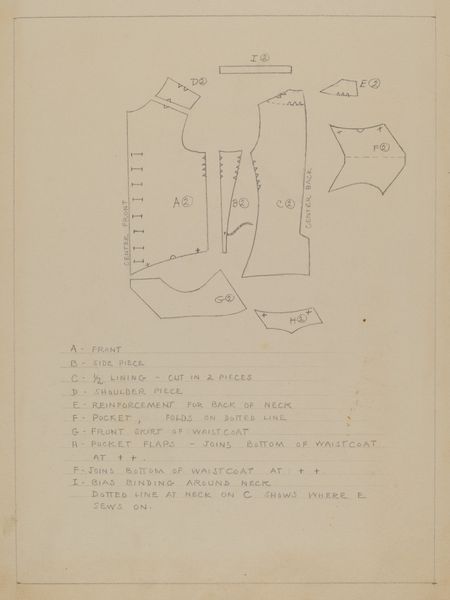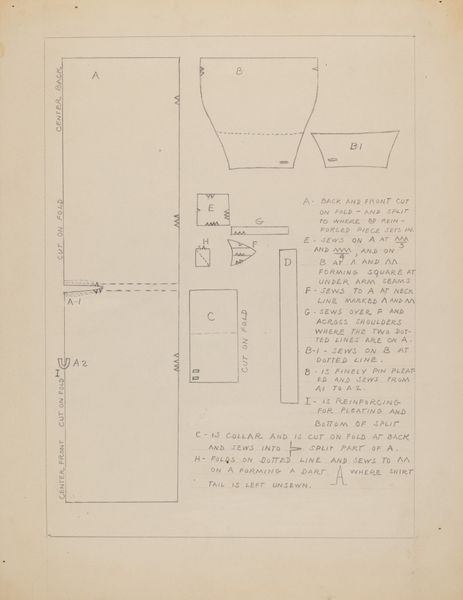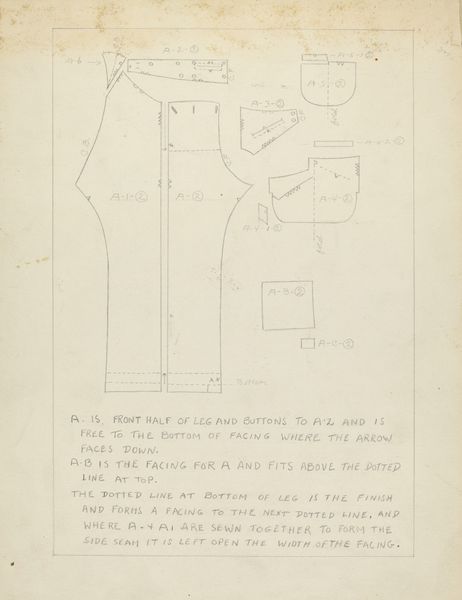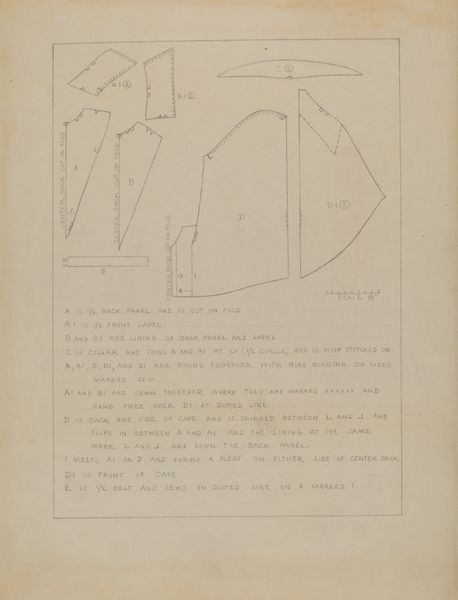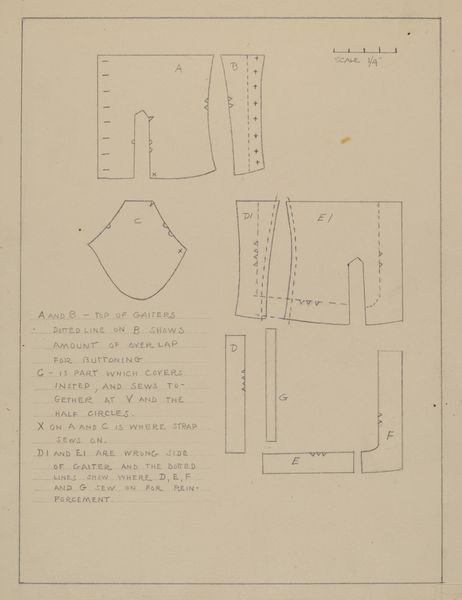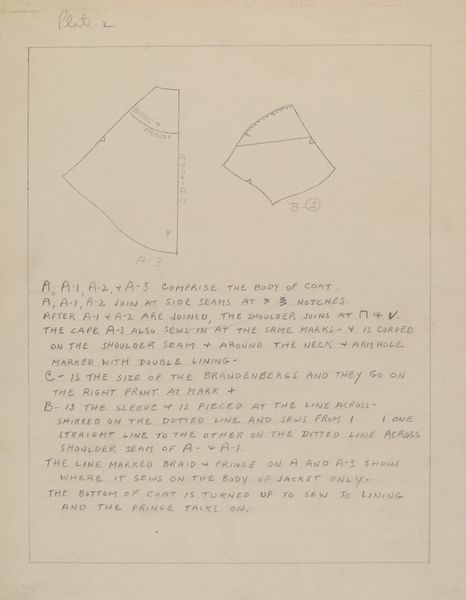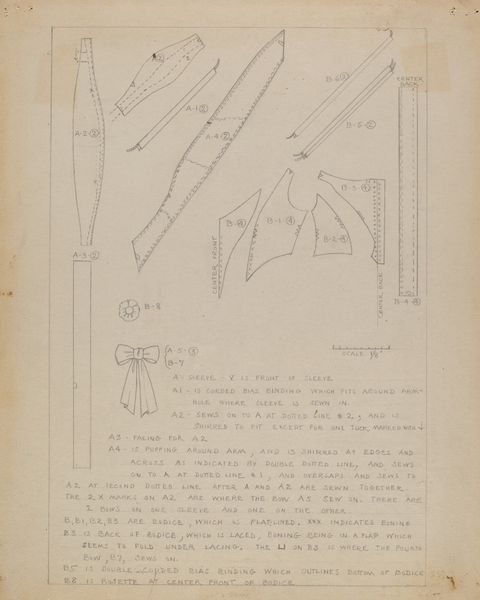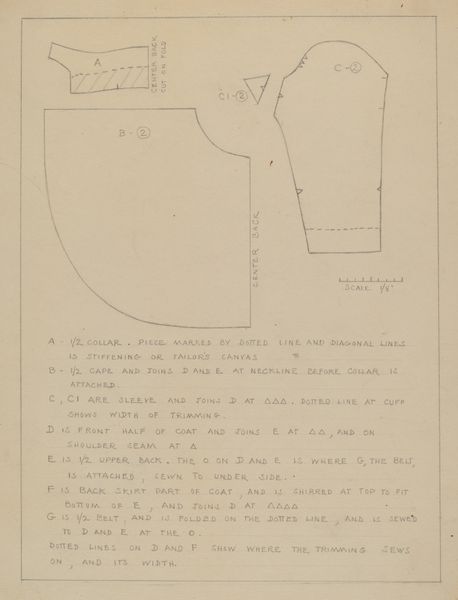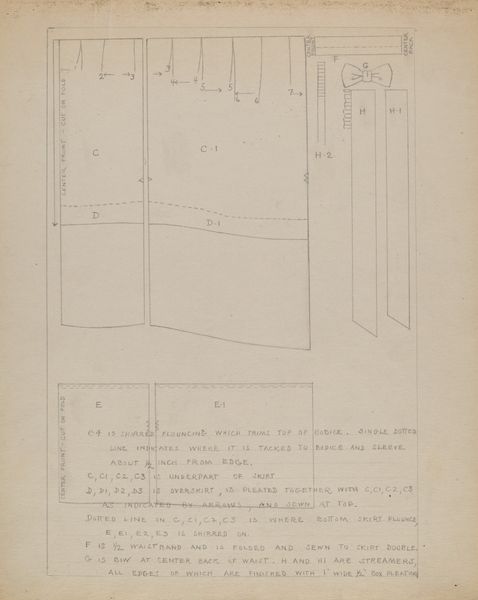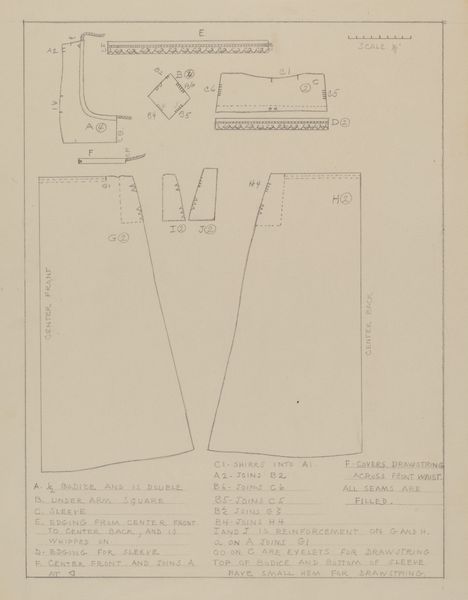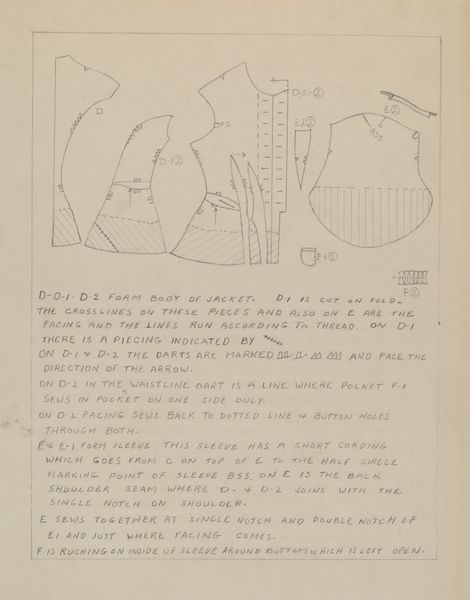
drawing, paper, pencil
#
drawing
#
paper
#
geometric
#
pencil
#
decorative-art
Dimensions: overall: 29.9 x 22.3 cm (11 3/4 x 8 3/4 in.)
Copyright: National Gallery of Art: CC0 1.0
Curator: Here we have Jean Peszel's "Pattern for a Dress," a pencil drawing on paper from around 1936. What strikes you about it? Editor: It's fascinating how raw and technical it feels, like peeking behind the scenes of fashion creation. All these deconstructed shapes... it makes you consider the labor that goes into every garment. Curator: Absolutely. Peszel worked as a freelance pattern maker, and this drawing provides insight into the meticulous process of garment construction. The visible instructions and annotations—'front bodice', 'back skirt'— reveal a practical, almost instructional approach. We’re looking at the infrastructure of dressmaking. Editor: Right, it brings to the forefront the usually invisible labor of women in the textile industry. How often do we think about the skilled hands translating these patterns into wearable pieces, especially in the context of mass-produced fashion that boomed in this era? This wasn't simply 'art'; it was skilled, vital work. Curator: Exactly. Consider the material context as well. The humble pencil on paper speaks to accessible, everyday tools transforming into technical drawings used to direct textile workers, but also for those making clothing at home. It bridges the gap between haute couture and domestic economies. Editor: It also makes me think about how gender played a crucial role. Dressmaking was women's work, often undervalued. The pattern, although simple looking, signifies control over self-expression for those who used it. Creating garments that either challenge or abide by fashion codes determined how women presented themselves, often limited by what they were 'allowed' to be seen in. Curator: An astute point. And even beyond that agency, it speaks to issues around affordability. These types of patterns made popular fashions available to folks who couldn’t purchase directly from boutiques or department stores. Editor: Seeing this as more than just an isolated image encourages conversations about art and social commentary, blurring lines between drawing and documentation, fine art and craft, production, labor, gender roles and socioeconomic circumstances during the late 1930's. Curator: Indeed. "Pattern for a Dress" pushes us to look beyond traditional aesthetic value, reminding us that the creation and consumption of art are both intricately woven into the broader tapestry of our shared experiences. Editor: Yes, this seemingly simple technical drawing shows us a powerful intersection between creativity, social responsibility, and sartorial agency that moves past pretty looks into an active practice.
Comments
No comments
Be the first to comment and join the conversation on the ultimate creative platform.
